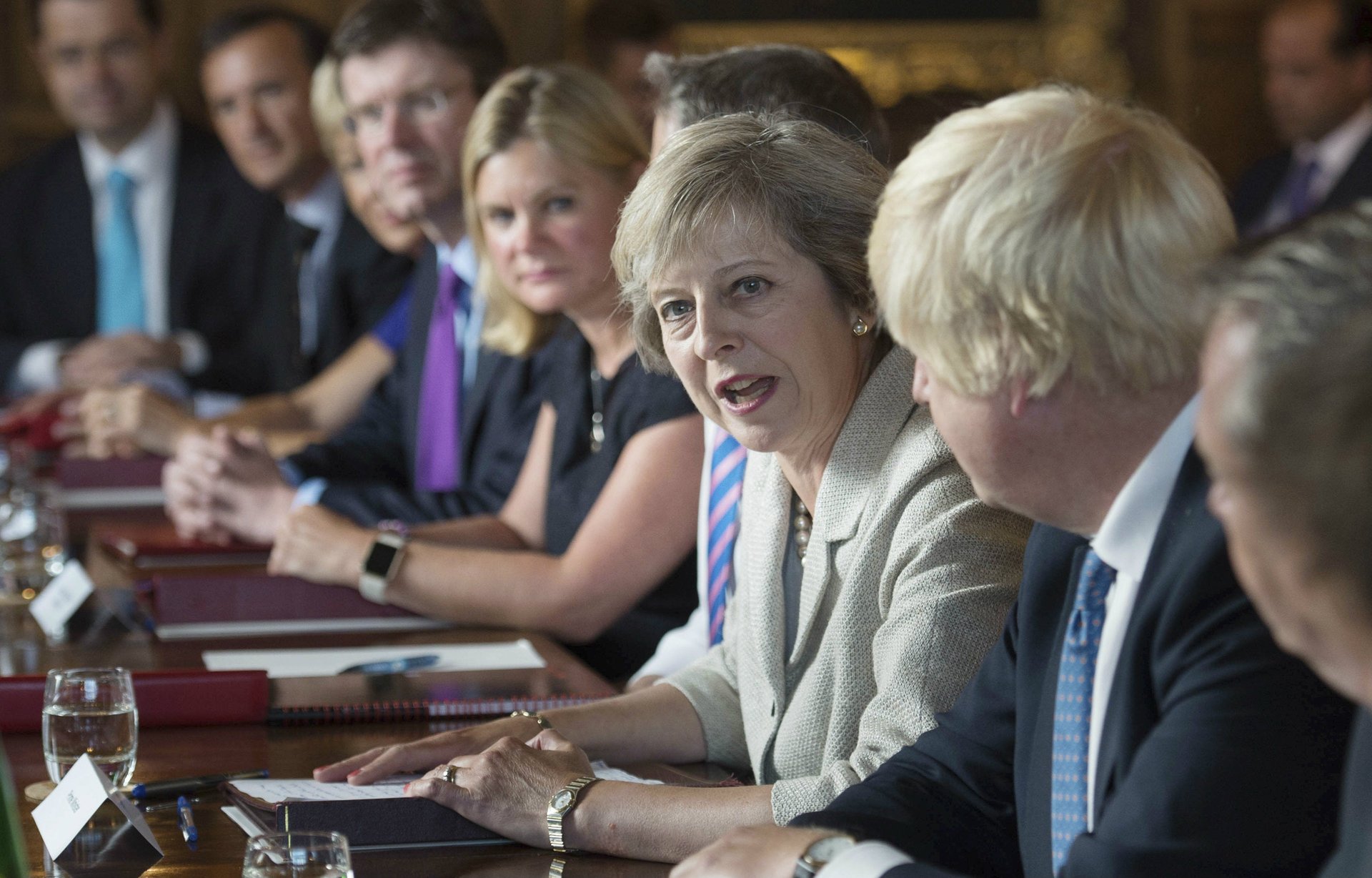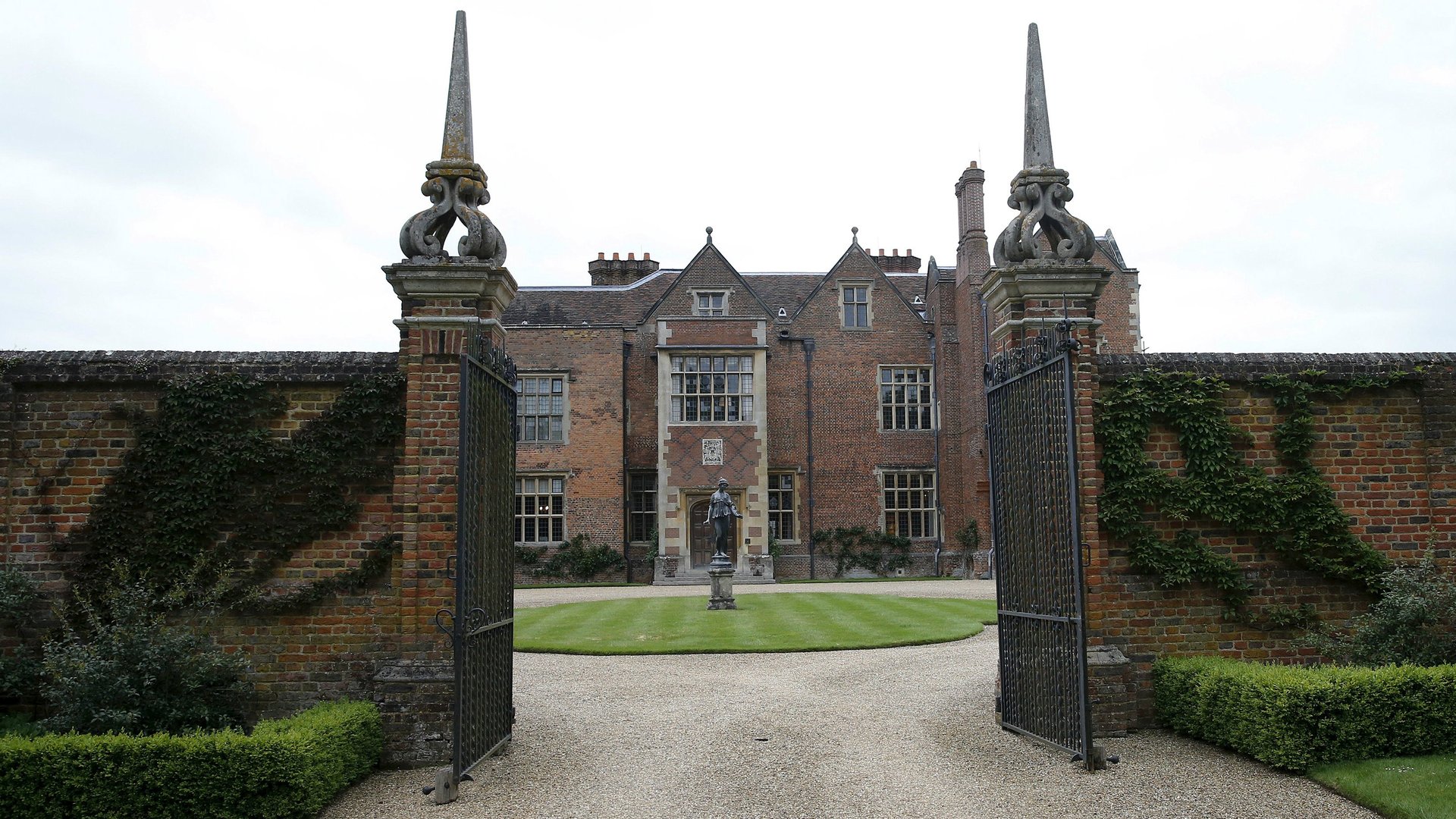The UK prime minister heads to a 16th century manor house to solve Brexit’s “mad riddle”
“Who knows about Brexit? No one’s got a f****** clue what Brexit is. It’s like this mad riddle”—Danny Dyer, soap opera actor and sometime astute political commentator.


“Who knows about Brexit? No one’s got a f****** clue what Brexit is. It’s like this mad riddle”—Danny Dyer, soap opera actor and sometime astute political commentator.
When the star of a TV show is said to speak for a nation (paywall) on the most consequential political and economic development in your country’s recent history, you know something’s not right.
And so today (July 6)—266 days until Britain leaves the EU—UK prime minister Theresa May and her cabinet will scuttle to Chequers, a 16th century manor house 40 miles (65km) north-west of central London, to try and solve the problem.
The task may seem simple at first. May hopes to come away from the summit with Britain’s future trading relationship with the EU decided once and for all.
This is easier said than done. The debate will be fraught with a complex range of options that do not satisfy anyone completely—her MPs, businesses, or other members of the bloc. Already, it looks like May will have to fight off a revolt from at least six of her ministers, following leaks ahead of the summit (paywall). And there is, of course, the question of how these arrangements will affect the border in Northern Ireland, which is still one of the most contentious issues.
Broadly, there are two main warring factions. The first is composed of those who want a “soft” Brexit, something that would involve some form of membership of the EU’s single market. This would mean that the UK would have to accept some degree of free movement of people (something Brexit supporters do not want). Everything, critics say, would stay the same as it is now—except Britain would no longer have a seat at the EU’s decision-making table.
The second faction is in favour of a “hard” Brexit, something that could involve the UK crashing out of the EU with no deal. In any scenario, a hard Brexit would at least involve the country exiting the EU’s single market altogether.

A hard Brexit is looking increasingly likely: Negotiations with the EU are not going well, and the bloc has consistently reminded Britain that it can’t have an “a la carte” Brexit, picking and choosing the aspects of EU membership that it likes. This seemed to be May’s position for a while, too: In the months after Britain’s decision, she repeatedly reminded everyone that “Brexit means Brexit” and her manifesto pipped for a hard Brexit (paywall).
Warnings about the implications of a hard Brexit have been piling up even since before the 2016 vote—from banks, think tanks, lobby groups and the country’s largest firms. Jaguar Land Rover said yesterday that a bad Brexit deal could cost the firm more than £1.2 billion ($1.6 billion) in profit per year, while Britain’s retail consortium said a no-deal “hard” Brexit could lead to “food rotting at ports.”
The discussion at Chequers will focus almost entirely on new proposals related to the EU’s customs union, an aspect of the bloc’s single market. Membership of the EU’s customs union allows most goods—but not food, agricultural goods or services—to pass between countries without checks or duties, provided that a common external tariff is applied to them.
Up until this week, there had essentially been two of these proposals on the table (paywall). The first was a form of soft Brexit: A customs partnership that would see the UK imposing EU tariffs on goods and collecting the money on the EU’s behalf. Businesses would then have to apply for tariff rebates if the goods ended up staying in the UK.
The second option, “max fac” (maximum facilitation), would involve a complete exit from the single market—and thus, the customs union—and the imposition of a customs border. This is the choice favored by the pro-Brexit ministers in May’s cabinet, like foreign secretary Boris Johnson and Brexit secretary David Davis, and they say technology could be used to make the border “frictionless” and minimize customs checks delays.
It’s thought that they have managed to kill off the customs partnership option, May’s preferred one—even though British businesses have overwhelming rejected max fac and HM Revenue & Customs said that it could cost the UK around £20 billion annually (paywall).
However, May is now set to present a third compromise option, dubbed the “facilitated customs arrangement.” The BBC reports that it would supposedly allow the UK the freedom to set its own tariffs. Technology would then be used to figure out if the goods are merely passing through the UK on their way to the EU—and thus whether EU tariffs should instead be applied to them. But already, it has been reported that such a deal could prevent a UK-US trade deal.
This is what incited last night’s rebellion of pro-Brexit ministers—and the Telegraph reported yesterday (paywall) that Davis had already told May that it won’t work, and that the EU will potentially say no to the proposal out of hand. (It bears a striking resemblance to some of the “a la carte” options the bloc has already rejected.)
That means that talks could go on well into the night, and ministers could potentially be asked to come back for weekend discussions. It could also mean that they come away with no agreement at all—just as the fears of British businesses reach an acrimonious pitch.